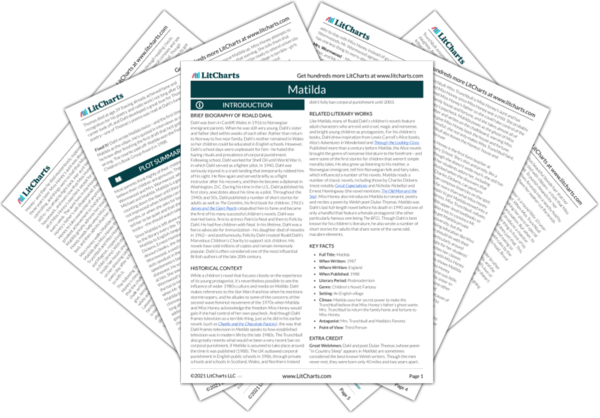Before Bruce started to do well, it was a bit of a liability for the other kids to root for him. It’s dangerous, after all, to openly oppose Miss Trunchbull and stand up to her abuse. But when Bruce manages to beat Miss Trunchbull at her own game by finishing the cake, it’s much safer for the other students to celebrate—they’re several hundred against one, after all. When Miss Trunchbull still ends this torture session by breaking the plate over Bruce’s head, it shows that whatever the law says, she still consistently turns to physical violence to get her way and make a point.


